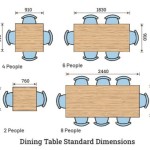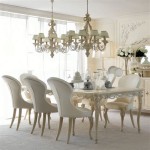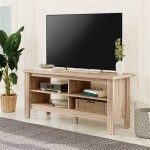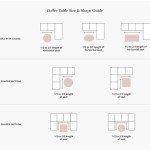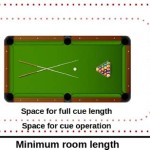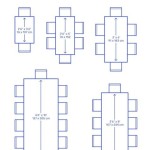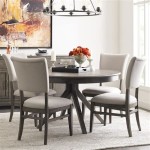Table For Inside Swimming Pool: A Comprehensive Guide
The concept of a table within an indoor swimming pool environment represents a fusion of functionality and luxury. It elevates the poolside experience, transforming it from a purely recreational space to one suitable for relaxation, entertainment, and even informal dining. Selecting the appropriate table requires careful consideration of factors such as material, size, style, and its resistance to the unique conditions presented by an indoor pool area. This article provides a comprehensive overview of tables designed for indoor swimming pools, exploring their various aspects and considerations for their effective integration.
The demand for such an amenity arises from the desire to maximize the utility of indoor pool spaces. Rather than simply offering a location for swimming, incorporating a table allows for activities such as enjoying refreshments, playing games, or conducting casual conversations while remaining in close proximity to the water. The decision to include a table within the pool environment signals an intention to enhance the overall user experience and encourage longer periods of engagement with the pool area.
Key Considerations for Selecting a Poolside Table
Several crucial elements must be considered when choosing a table destined for indoor pool use. Overlooking these factors could lead to premature deterioration of the table, compromising safety, or simply a mismatch between the table and the overall aesthetic of the pool area.
Material Durability: The most critical aspect is the material used in the table's construction. Indoor pool environments are characterized by high humidity, chlorine exposure, and fluctuating temperatures. Traditional wood, for instance, is generally unsuitable due to its susceptibility to moisture damage, warping, and fungal growth. Ideal materials include:
- Marine-Grade Polymer: This type of plastic is specifically engineered to withstand harsh marine environments, making it highly resistant to water, UV rays, and chemicals. Marine-grade polymer tables are known for their longevity and low maintenance requirements.
- Powder-Coated Aluminum: Aluminum inherently possesses resistance to corrosion. A powder-coated finish adds an extra layer of protection against scratches, fading, and the corrosive effects of chlorine and other pool chemicals.
- High-Density Polyethylene (HDPE): Another plastic option, HDPE, offers excellent resistance to moisture, chemicals, and impact. It is also a relatively lightweight material, making it easy to move the table if needed.
- Synthetic Wicker: While traditional wicker is not appropriate, synthetic wicker, typically made from resin, can provide aesthetic appeal while being water-resistant. However, the frame supporting the wicker must be made of a durable, corrosion-resistant material like aluminum.
- Stone or Tile: For a more permanent and luxurious option, tables with stone or tile surfaces can be considered. These materials are naturally water-resistant, but it's crucial to ensure the base of the table is constructed from a material that can withstand the pool environment.
Size and Shape: The dimensions of the table must be carefully considered in relation to the overall size of the pool area. A table that is too large can obstruct movement and create a cramped feeling, while a table that is too small may not be functional for its intended purpose. The shape of the table should also complement the surrounding space. Common shapes include:
- Round Tables: Round tables promote conversation and create a more intimate atmosphere. They are often suitable for smaller pool areas.
- Square Tables: Square tables offer a balanced appearance and can be easily arranged alongside other square or rectangular elements in the pool area.
- Rectangular Tables: Rectangular tables provide ample surface space and are well-suited for larger gatherings or for serving food and drinks.
- Coffee Tables: Lower coffee tables can be placed near lounge chairs, serving as a convenient surface for drinks, books, or other personal items.
Style and Aesthetics: The table should complement the overall design and style of the indoor pool area. This includes considering the color scheme, architectural details, and existing furniture. A modern pool area might benefit from a sleek, minimalist table with clean lines, while a more traditional pool area might call for a table with ornate details or a classic design. The material and finish of the table should also align with the desired aesthetic. For instance, a table with a faux wood finish can provide the appearance of natural wood without the maintenance concerns.
Addressing Environmental Challenges
An indoor swimming pool presents a unique set of environmental challenges to any furniture placed within it. Successfully addressing these challenges is paramount to ensuring the longevity and safety of the poolside table.
Humidity Control: High humidity levels are a constant concern in indoor pool environments. This humidity can promote the growth of mold and mildew, accelerate corrosion, and damage certain materials. Effective ventilation and dehumidification systems are essential for mitigating these risks. The table's material should be chosen with humidity resistance in mind. Furthermore, regular cleaning and maintenance can help prevent the buildup of moisture and contaminants.
Chlorine Exposure: Chlorine, while necessary for maintaining water sanitation, can be corrosive to certain materials. Over time, chlorine exposure can cause fading, discoloration, and even structural damage. Tables made from chlorine-resistant materials, such as marine-grade polymer or powder-coated aluminum, are recommended. Additionally, regular cleaning with a mild soap and water solution can help remove chlorine residue and protect the table's surface.
Temperature Fluctuations: Indoor pool areas often experience temperature fluctuations, particularly during periods of inactivity. These fluctuations can cause materials to expand and contract, potentially leading to cracking or warping. Materials with a low coefficient of thermal expansion, such as HDPE, are less susceptible to damage from temperature changes. It is also important to ensure that the table's construction is robust enough to withstand these stresses.
Safety Considerations for Poolside Tables
Safety is a paramount concern in any pool environment. Selecting a table designed with safety in mind is crucial to prevent accidents and injuries.
Stability and Weight: The table must be stable and resistant to tipping over, especially in areas where children are present. A wider base or a heavier weight can help prevent accidental toppling. Consider a table with adjustable feet to compensate for uneven surfaces around the pool. For lighter tables, using weighting mechanisms or securing them to the ground can increase stability.
Edge and Corner Design: Sharp edges and corners can pose a safety hazard, especially for children running around the pool. Tables with rounded edges and corners are preferable, as they reduce the risk of cuts and scrapes. If a table with sharp edges is unavoidable, consider using edge protectors or bumpers to soften the impact.
Surface Texture: A slippery surface can be dangerous, particularly when wet. Tables with textured surfaces or non-slip coatings provide better traction, reducing the risk of items sliding off and preventing accidental slips or falls. Consider the surface's wet grip coefficient when selecting a table, prioritizing materials with a higher rating.
Material Safety: The table's material should be non-toxic and free from harmful chemicals that could leach into the pool water. Ensure the material complies with relevant safety standards and regulations for indoor use. Specifically, investigate if the materials are known to cause allergic reactions or skin sensitivities.
By addressing these critical elements, the integration of a table into an indoor swimming pool can provide a valuable enhancement to the overall experience. The appropriate selection, careful attention to environmental challenges, and prioritization of safety will ensure a functional, aesthetically pleasing, and long-lasting addition to the pool area.

In Pool Furniture Tables Seating S R Smith

Relaxation Station Swimming Pool Table And Stools

Pool Party Swimming Patio Furniture

In Pool Sun Shelf Swimming Tables Ledge Lounger

In Pool Tables Stools Benches Design Options For Swim Up Dining

Sr Smith Destination Series 30 In Pool Table Gunite Anchor Included Pebble Ws Pooltable 55 C

In Pool Furniture Tables Seating S R Smith

Swimming Pool With Built In Seats And Table Hot Tub Chicago By Platinum Poolcare Houzz Ie

Pool Swim Up Table Built In Seat Pictures

Step2 Vero In Pool Shade Table White

